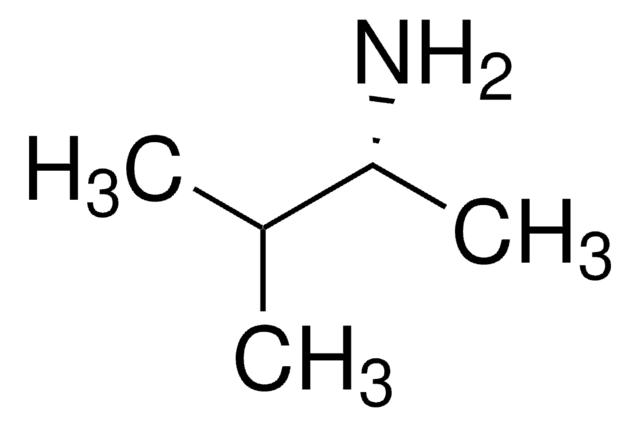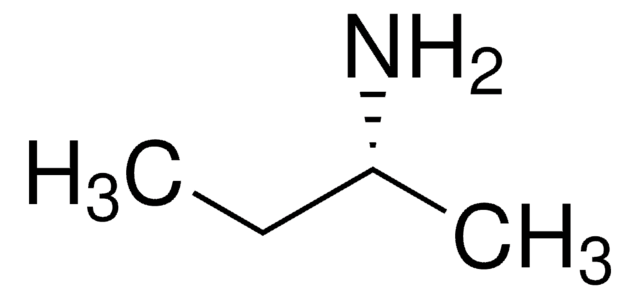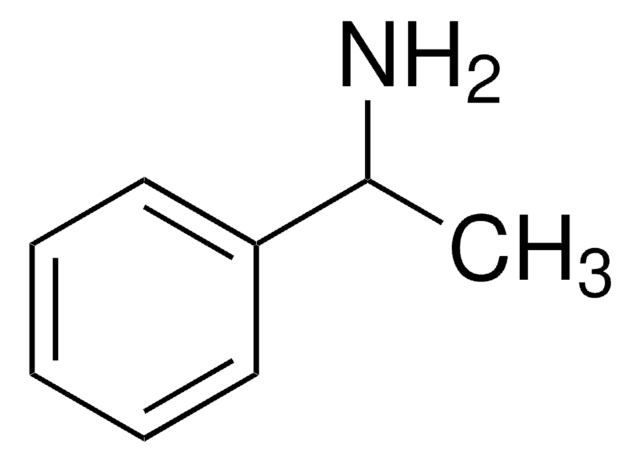171417
2-Aminopentane
97%
Synonym(s):
1-Methylbutylamine, 2-Amylamine
Sign Into View Organizational & Contract Pricing
All Photos(2)
About This Item
Linear Formula:
CH3CH(NH2)CH2CH2CH3
CAS Number:
Molecular Weight:
87.16
EC Number:
MDL number:
UNSPSC Code:
12352100
PubChem Substance ID:
NACRES:
NA.22
Recommended Products
Assay
97%
refractive index
n20/D 1.4020 (lit.)
bp
90.5-91.5 °C (lit.)
density
0.736 g/mL at 25 °C (lit.)
SMILES string
CCCC(C)N
InChI
1S/C5H13N/c1-3-4-5(2)6/h5H,3-4,6H2,1-2H3
InChI key
IGEIPFLJVCPEKU-UHFFFAOYSA-N
Looking for similar products? Visit Product Comparison Guide
Related Categories
Signal Word
Danger
Hazard Statements
Precautionary Statements
Hazard Classifications
Eye Dam. 1 - Flam. Liq. 3 - Skin Corr. 1B
Storage Class Code
3 - Flammable liquids
WGK
WGK 3
Flash Point(F)
95.0 °F - closed cup
Flash Point(C)
35 °C - closed cup
Personal Protective Equipment
dust mask type N95 (US), Eyeshields, Gloves
Choose from one of the most recent versions:
Already Own This Product?
Find documentation for the products that you have recently purchased in the Document Library.
Customers Also Viewed
Jan Leipert et al.
Journal of the American Society for Mass Spectrometry, 28(12), 2538-2547 (2017-09-01)
N-acyl homoserine lactones (AHL) are small signal molecules involved in the quorum sensing of many gram-negative bacteria, and play an important role in biofilm formation and pathogenesis. Present analytical methods for identification and quantification of AHL require time-consuming sample preparation
Jan Leipert et al.
Analytical and bioanalytical chemistry, 410(19), 4737-4748 (2018-02-23)
The identification and quantification of molecules involved in bacterial communication are major prerequisites for the understanding of interspecies interactions at the molecular level. We developed a procedure allowing the determination of 2-heptyl-4(1H)-quinolone (HHQ) and 2-heptyl-3-hydroxy-4(1H)-quinolone (PQS) and the virulence factor
Chromatograms
suitable for GCOur team of scientists has experience in all areas of research including Life Science, Material Science, Chemical Synthesis, Chromatography, Analytical and many others.
Contact Technical Service














